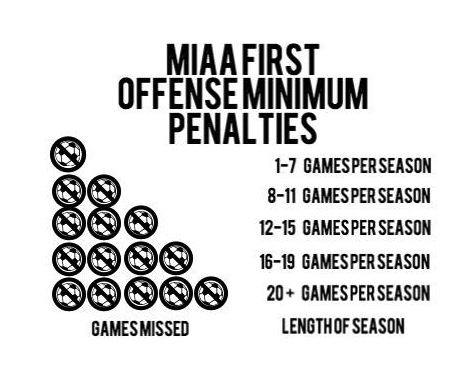At the beginning of the 2015 school year, Walpole High Administration made the decision to lower all chemical health suspensions remaining from last spring by 50%. This controversial decision seemingly contradicted Walpole High’s strict policy of administering suspensions to students who are only “in the presence of alcohol,” raising serious questions about the legitimacy and effectiveness of Walpole High’s chemical health policy.
“We wanted to try to get all of the suspensions off the books as quickly as possible,” said Principal Stephen Imbusch.
The lowering of the suspensions, he said, was a way to move past the negativity caused by outdated suspensions.
“It’s a way of saying, ‘Hopefully we’ve all learned from this, let’s get past these suspensions,’” said Imbusch, “because every game that occurred where a kid was sitting on the sideline because of a suspension, [the suspension was staying] alive and it was starting to really become a negative thing as opposed to a learning experience.”
However, suspensions are supposed to be negative. The purpose of suspensions is to punish students who have done something illegal by taking away something they enjoy doing. While it is true that “kids are better off actively involved than sitting on the sidelines,” as Imbusch said, it is crucial that administration sticks to its policy in terms of suspending students for illegal actions, so that administration can maintain its credibility and discourage students from breaking the law.
The decision to lower suspensions reveals a major flaw in Walpole High’s punitive system: how can administration expect to see a decrease in Walpole High’s chemical health violation numbers while continuing to confuse students with a strict policy that is not at all strictly enforced? They can’t.
As long as Walpole High continues to loosely enforce its stringent policy, Walpole will see no decrease in the number of violations for various reasons. First, Walpole High’s policy is just too strict. The rules defined in the handbook are stricter than necessary according to MIAA guidelines, as Walpole’s handbook states that students who are “in the presence of alcohol” will be suspended, while other schools only punish students who have actually consumed alcohol. This “in the presence of” clause has been in place for two years and both years, Walpole has led the MIAA with the most chemical health violations.*
Besides the fact that the difference in the school’s policy is not working, the rules themselves seem to contradict Walpole High’s mission. If Walpole High administrators really want to lower the number of suspensions, why are such harsh rules in place that only make it easier for students to get into trouble?
Maybe it’s because administration hopes that the school’s stricter policy will decrease overall suspensions rates by scaring students into staying away from drugs and alcohol entirely, which is actually somewhat understandable. However, the final issue lies in following through. The school’s decision at the beginning of the year to lower all suspensions has caused, and will continue to cause, more problems than it intended to solve. Administration showed all of the students who had received a suspension last spring that their offense was not nearly as serious as they thought it was.
Moreover, the school has sent a message to all students and the Walpole community on the whole that they are not in control of the chemical health situation. When kids who receive punishments this year wonder why their suspensions are not lowered, how will the school be able to turn down future requests after its arbitrary decision this fall?
If administration at Walpole High is serious about lowering chemical health suspensions, they should consider the obvious fact that no changes will occur until the policy is reexamined, redefined, and fairly reinforced.
*The Rebellion reported erroneously the year in which the “in the presence of” clause was created. The rule was added to the handbook in 2007 and has therefore been in place for eight years, not two. The story should have stated that although the rule has been in place for several years, Walpole still led the MIAA with the most chemical health violations in the 2014-2015 school year.














